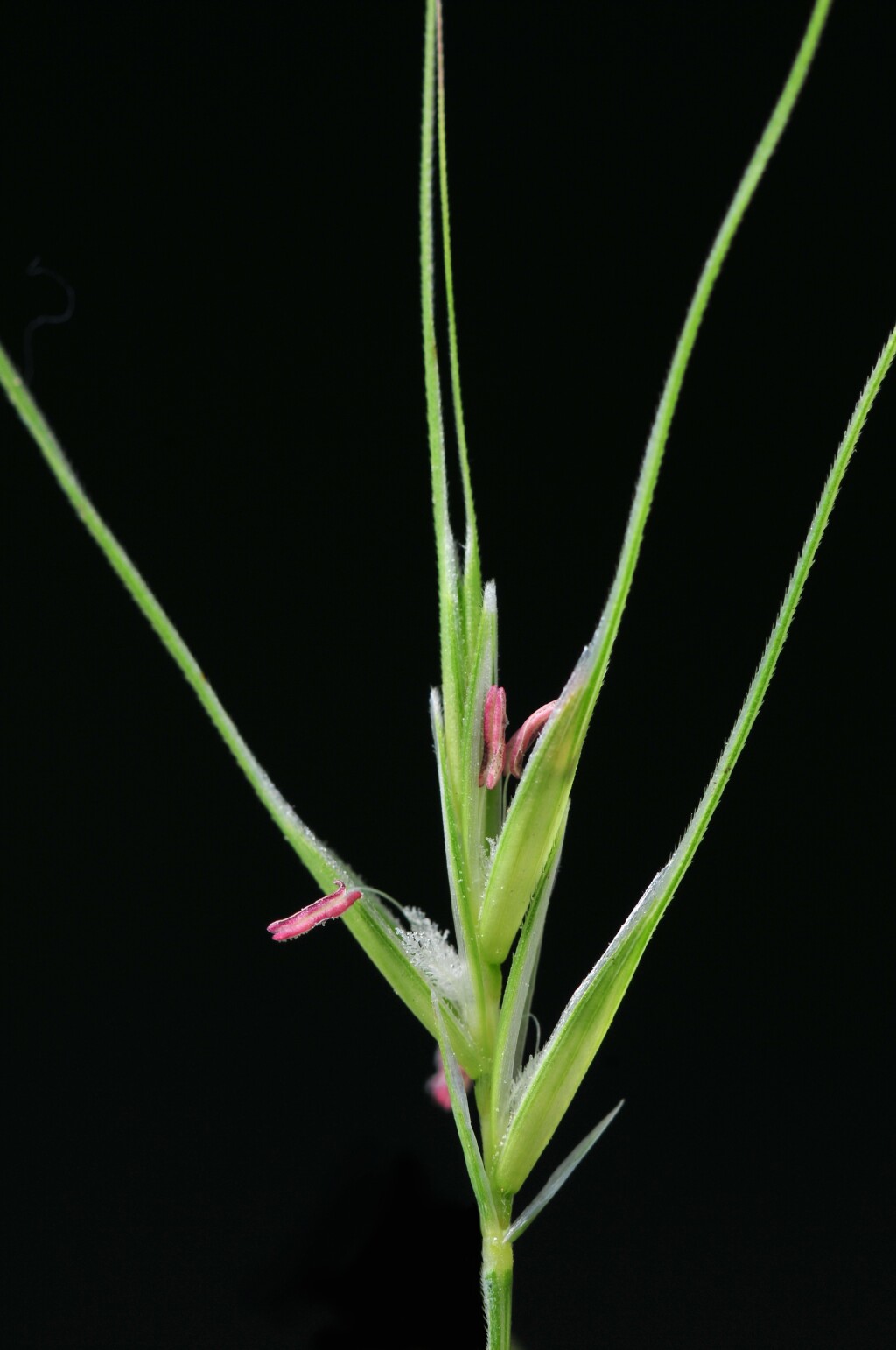Anthosachne
Tufted, or rarely, rhizomatous perennials; culms ascending to erect, sometimes decumbent. Leaf-blades flat or inrolled, scabrous on both surfaces; ligules scarious, auricles caliper-like, encircling the culm. Inflorescence a spike or spike-like; rachis tough, not disarticulating. Spikelets tangential to rachis, sessile or very shortly (<0.3 mm) pedicellate, 3–13-flowered; glumes lanceolate, membranous, 2–8-nerved, unequal, rarely reduced or absent, rarely the midvein produced into a short awn; lemma rounded dorsally, mucronate to long-awned, awn straight to recurved; palea at least half as long as lemma, its keels scabrous.
About 12 species from Australia, New Zealand and Papua New Guinea; 5 in Australia.
The taxonomy of the Triticeae (the tribe to which Anthosachne belongs) is complicated and there is a wide range of circumscription and acceptance of genera within the tribe. Anthosachne is often treated as a synonym of Elymus.
Anthoscachne plurinervis (Vickery) Barkworth & S.W.L.Jacobs is represented in Victoria by an 1874 specimen purportedly from Red Jacket, near Aberfeldy. This is a substantial disjunction from the locality for the nearest known specimen (near Thredbo, New South Wales) and is perhaps a result of mixing of labels, but the species may yet be shown to occur in Victoria. While specimens of this species from northern New South Wales and Queensland appear distinctive, a large number of specimens appear rather intermediate between A. plurinervis and A. scabra. It is distinguished from A. scabra in having relatively broad, chaffy, 6–8-nerved rather than 2–4(–5) nerved glumes that are 10–15 mm long, and upper glumes that taper to the apex from above rather than below midway.
 Spinning
Spinning


